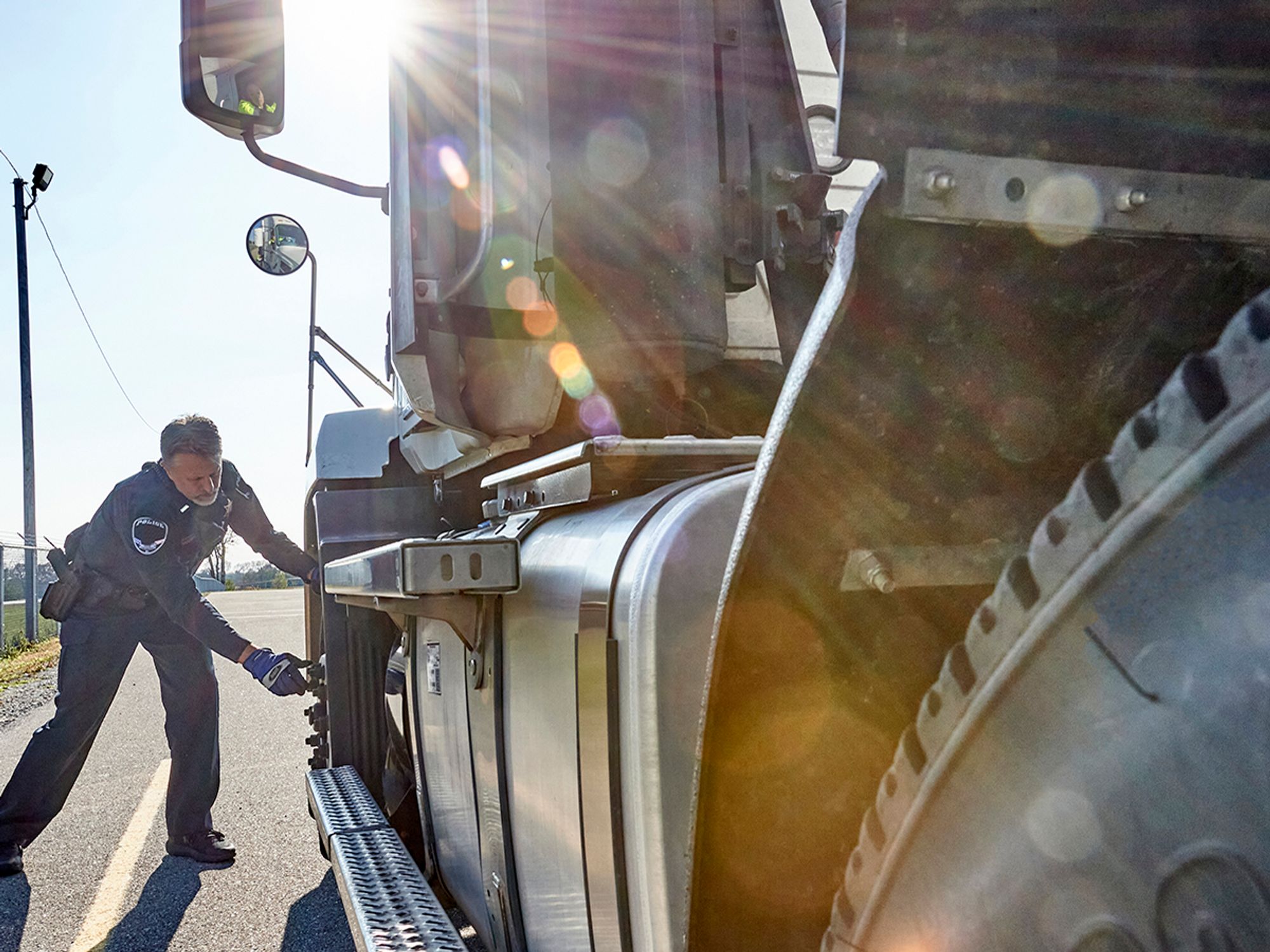Safety data collection

- The CSA program collects safety data on drivers and motor carriers.
- Data sources include roadside inspection reports, crash reports, and motor carrier investigations.
The Compliance, Safety, Accountability (CSA) program was designed to take advantage of the immense amount of data being collected during the 3.3 million roadside inspections that take place in the U.S. every year. All crashes and nearly all safety-related violations reported at the roadside are used in CSA to grade both carriers and drivers on safety performance. A violation can be logged even if a citation or ticket is not issued — even if the driver is simply issued a written warning — and even if the driver is not placed out of service. The violation simply needs to appear on a roadside inspection report.
On the other hand, if a driver receives a ticket for a moving violation, for example, but the violation is not reported on an inspection report (such as in a situation where a local police officer writes the driver a ticket), the violation will not be a factor under CSA. It will likely appear on the driver’s driving record, but not in the CSA scoring system.
Note also that a driver’s violations will stay on the employing motor carrier’s record — and be used in grading that carrier’s performance — even if the driver stops working for that company. Once a driver or carrier is assigned a violation, it will continue to be used in the grading process for 24 months (or 36 months for the driver) despite any changes in driver employment.
Under CSA, a driver’s crash or violation report will:
- Be counted against the carrier for whom the driver is working at the time (not past or future employers);
- Affect that carrier’s scores for 24 months, even if the driver is let go; and
- Affect the driver’s personal scores for 36 months, even if the driver switches employers.
The collected data is recorded in the Motor Carrier Management Information System (MCMIS), a central repository of safety-related data accessible to federal and state roadside inspectors, among others. The MCMIS database includes:
- Inspection data, including the number of inspections performed;
- Violations recorded during roadside inspections;
- State-reported crash data; and
- Motor carrier census data, as reported by carriers, including number of vehicles, mileage data, address, etc.
The Federal Motor Carrier Safety Administration (FMCSA) also collects data during motor carrier investigations (such as in-house audits, for example), and some of that data is used in CSA to assess performance on the Behavior Analysis and Safety Improvement Categories (BASICs). Specifically, the agency looks for any acute” and “critical” violations:
- The acute violations are those where non-compliance is so severe that the violations require immediate corrective action by the carrier (such as not having a drug testing program).
- The critical violations relate directly to the carrier's safety management and/or operational controls and are indicative of a breakdown in those controls (such as false logs). A violation will not be considered critical unless a pattern of violations is found.
The FMCSA’s Safety Measurement System website will display information about any acute or critical violations that were found, and that information will be displayed for the next 12 months, indicating that the carrier is under the FMCSA’s microscope and the agency will be watching to make sure the carrier improves its performance.
